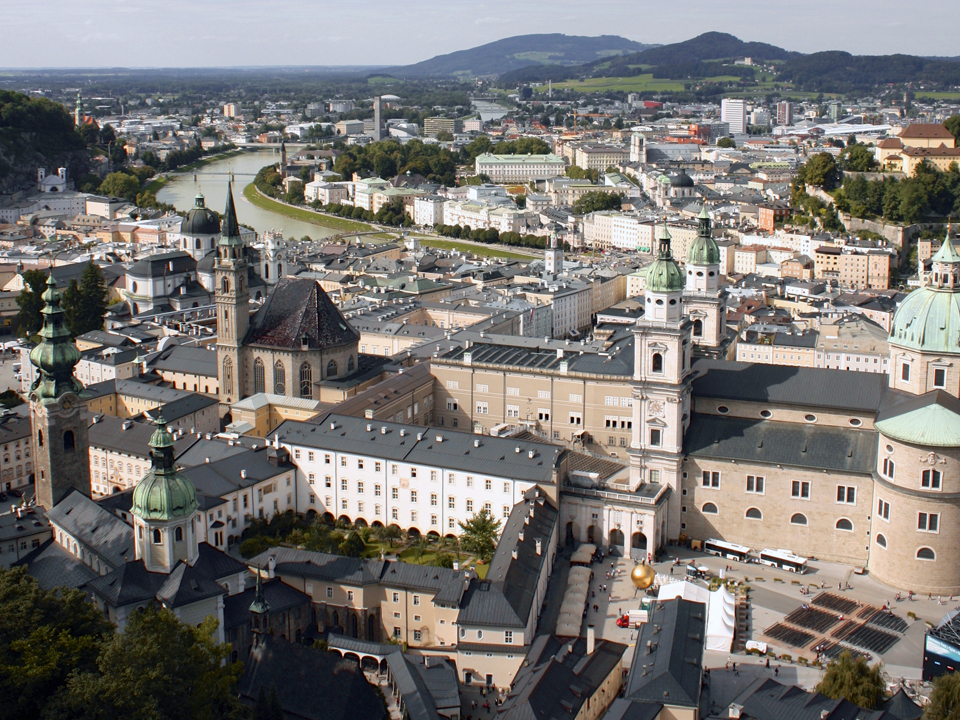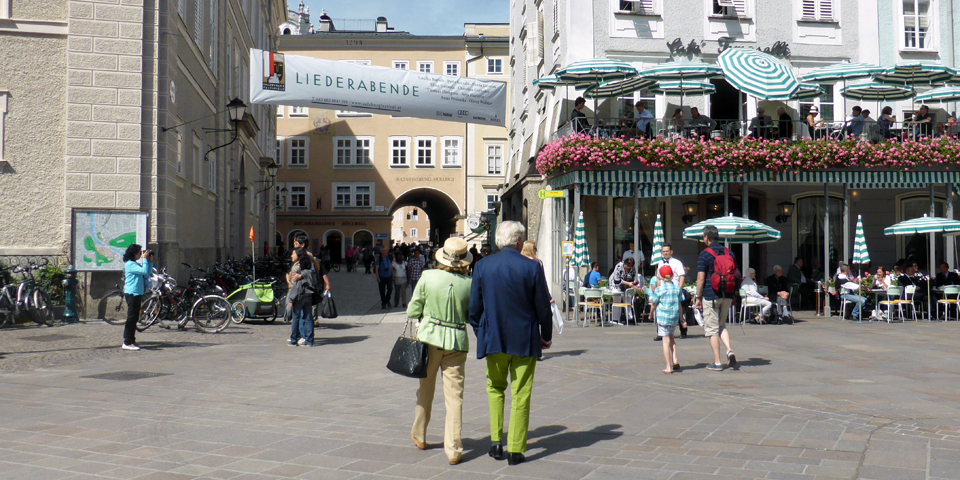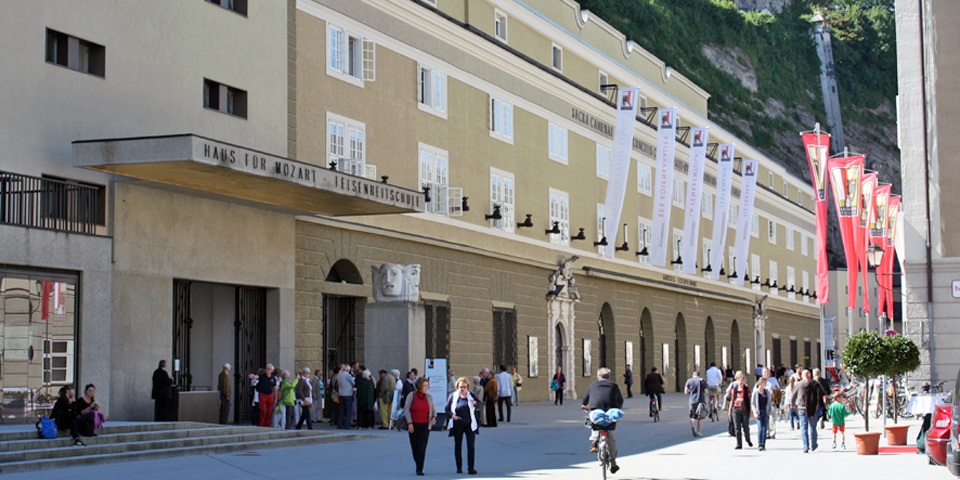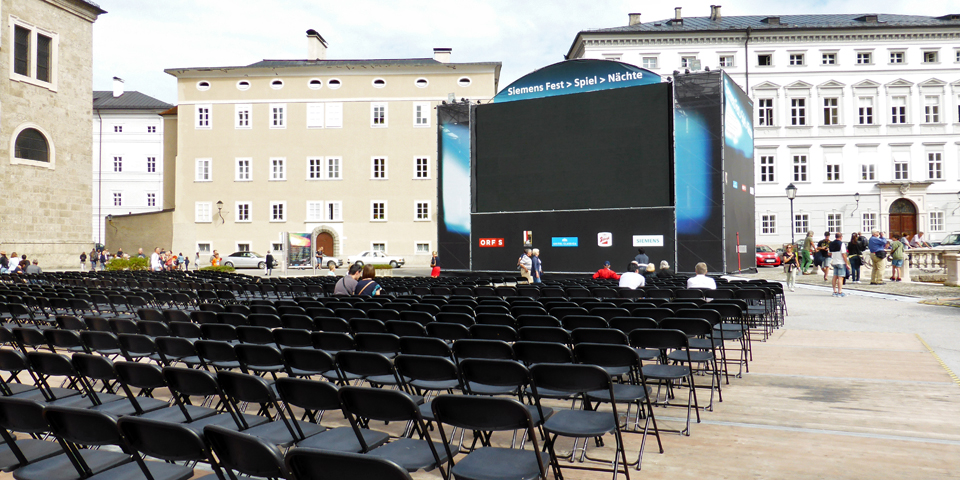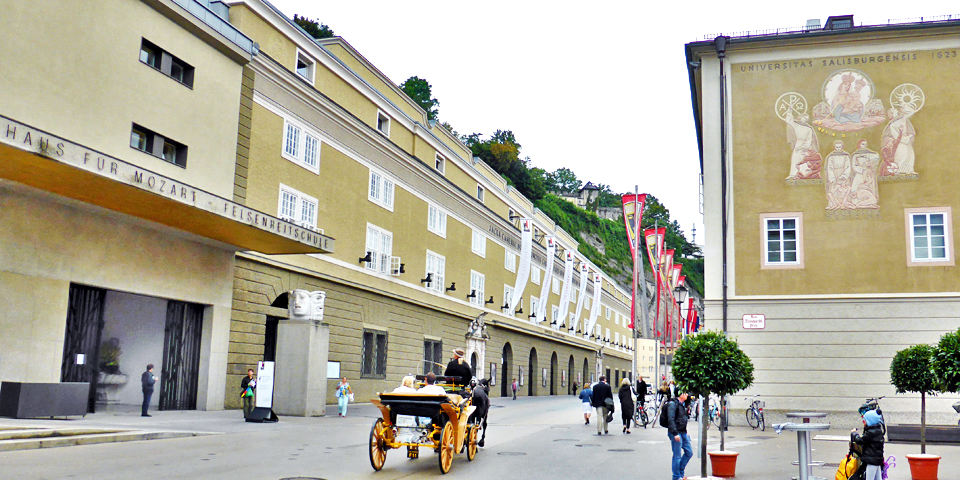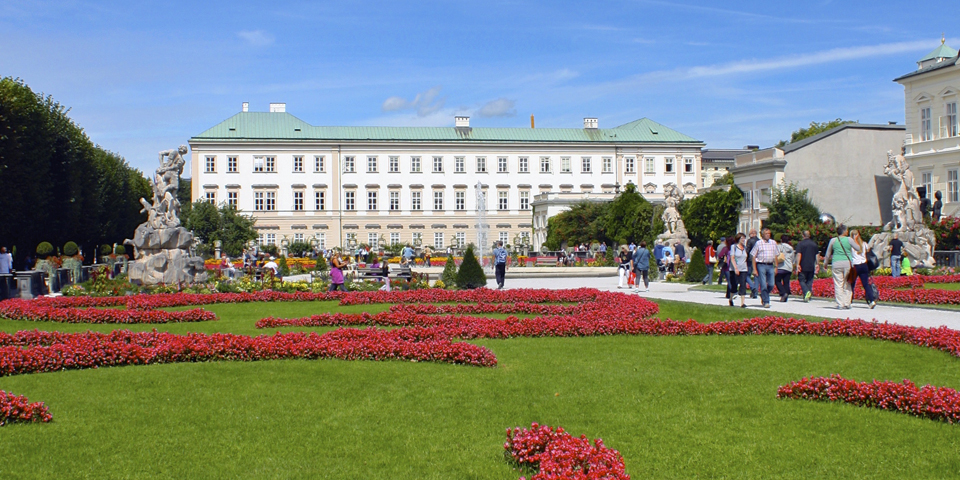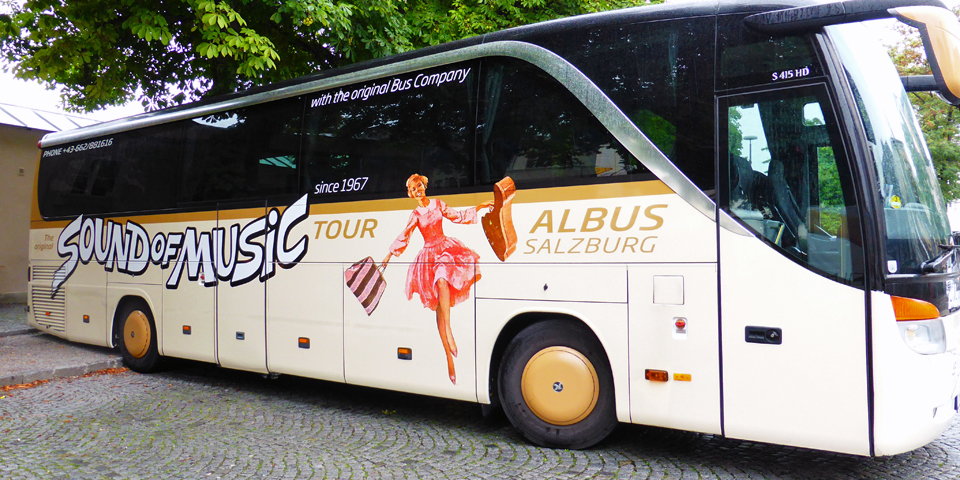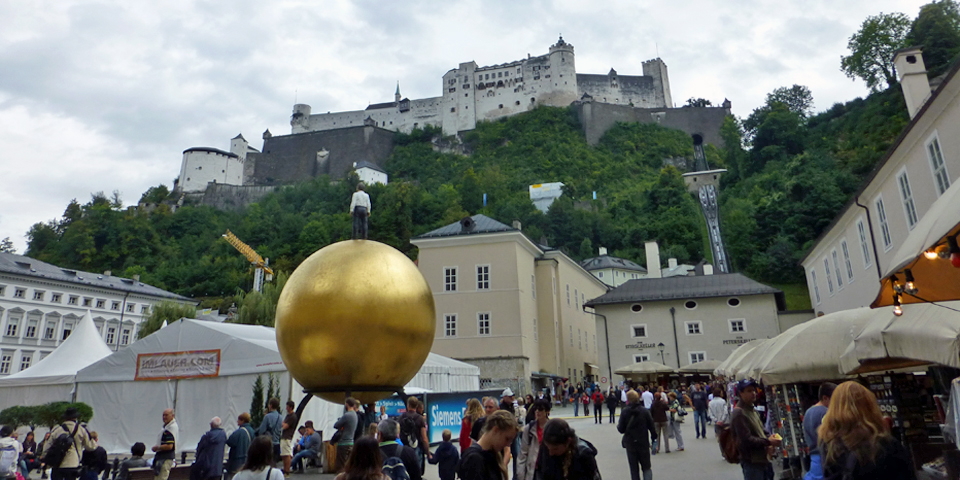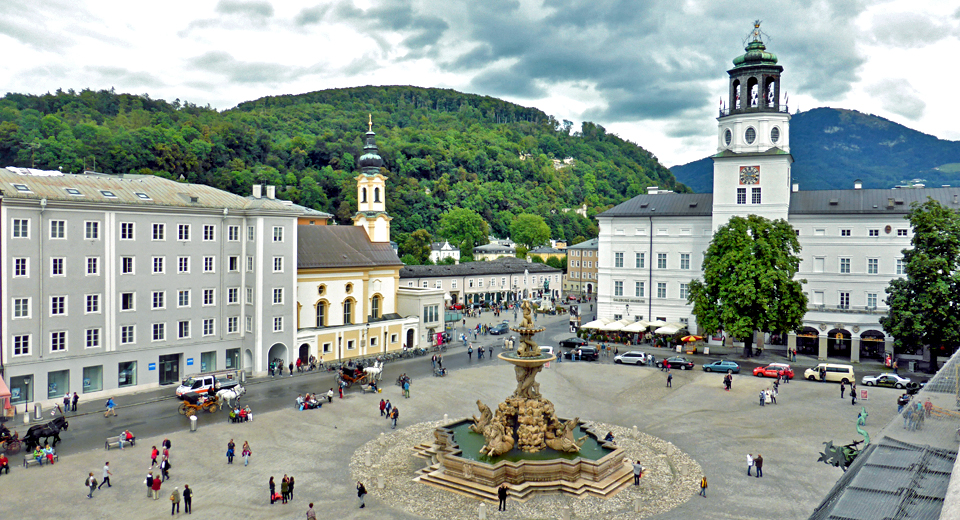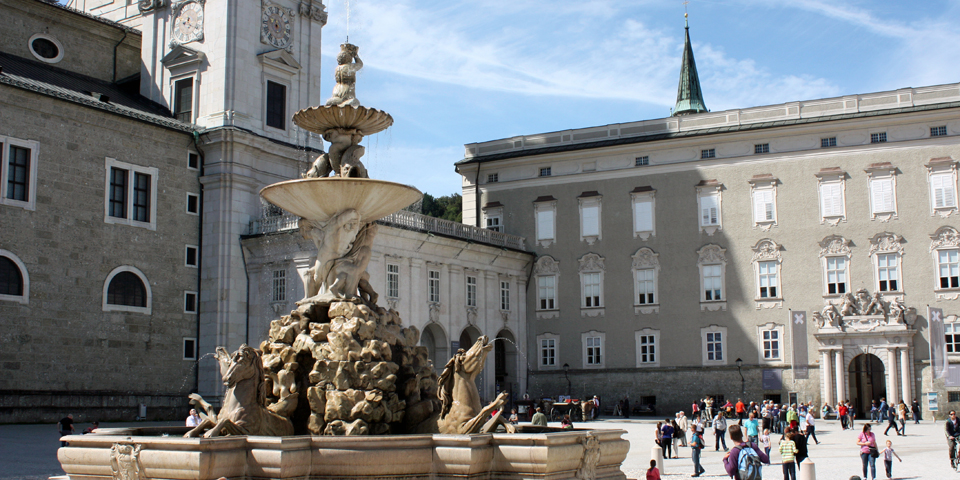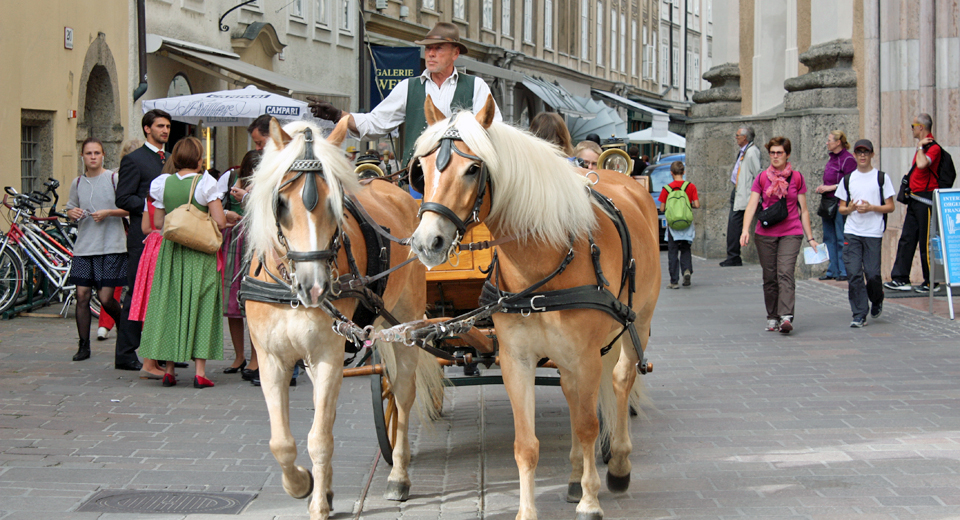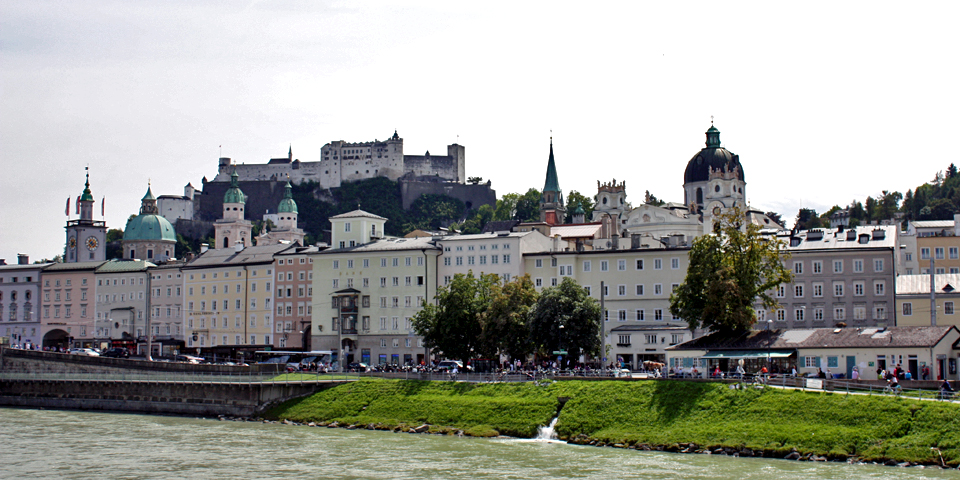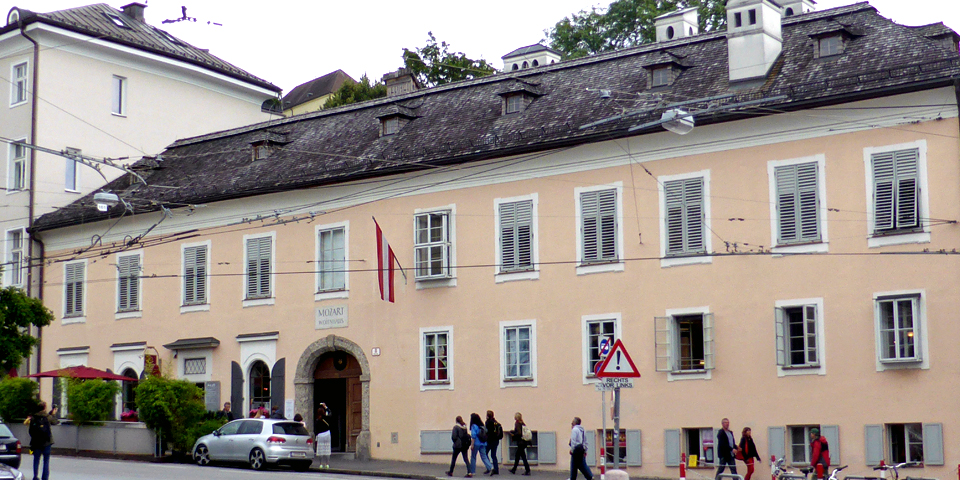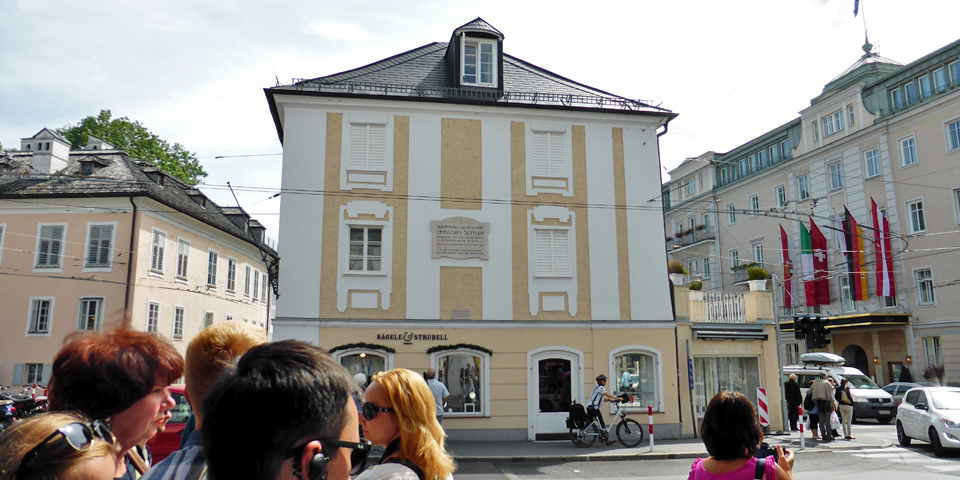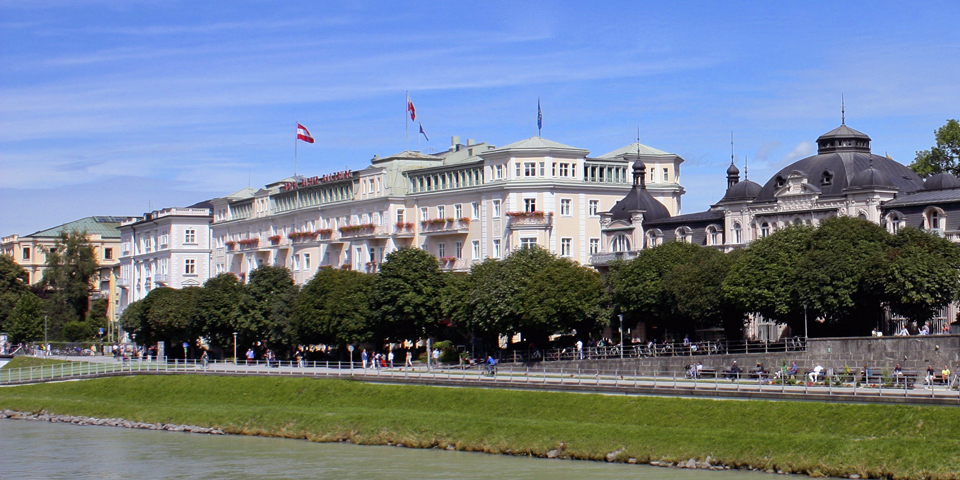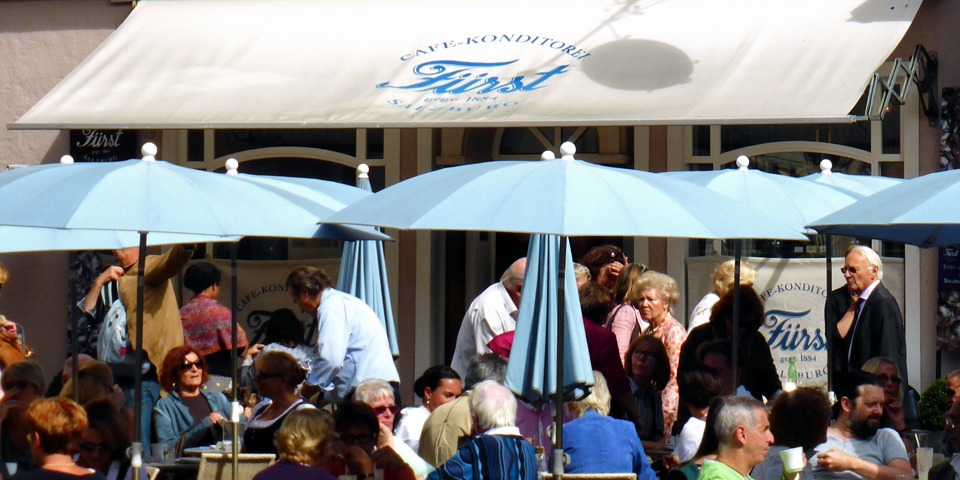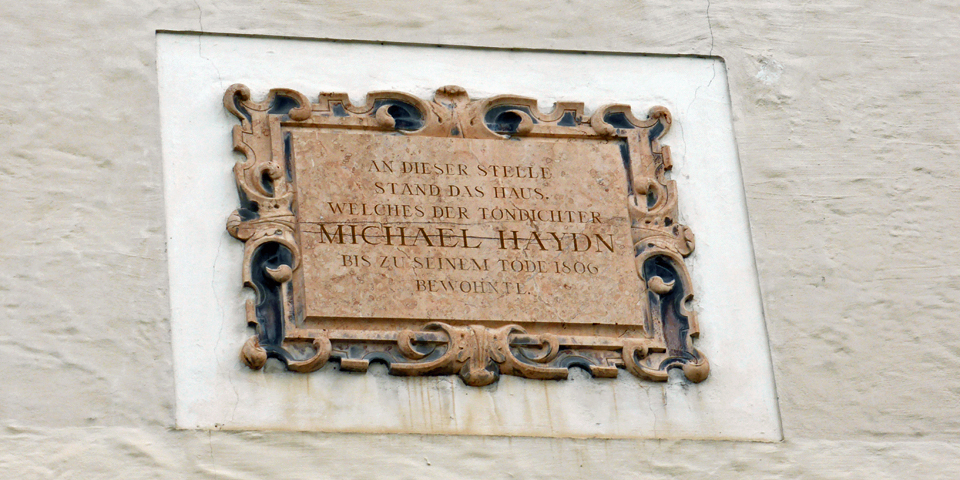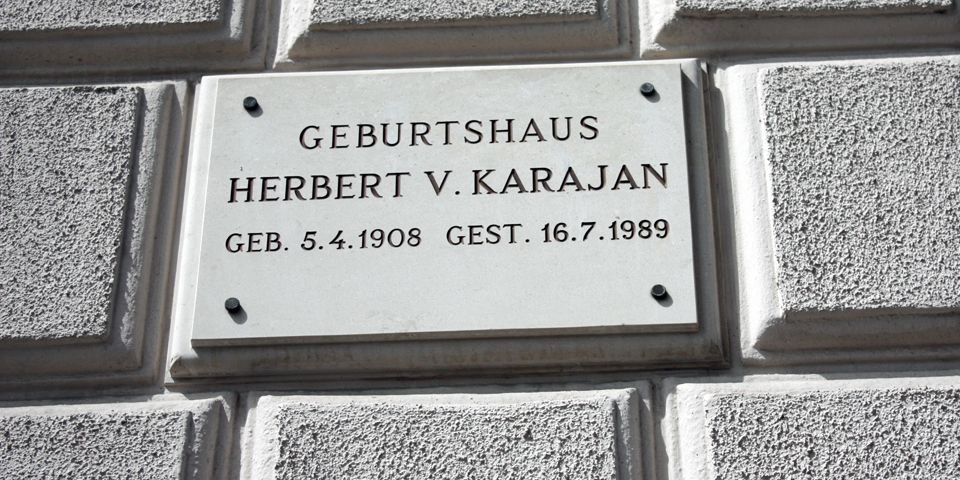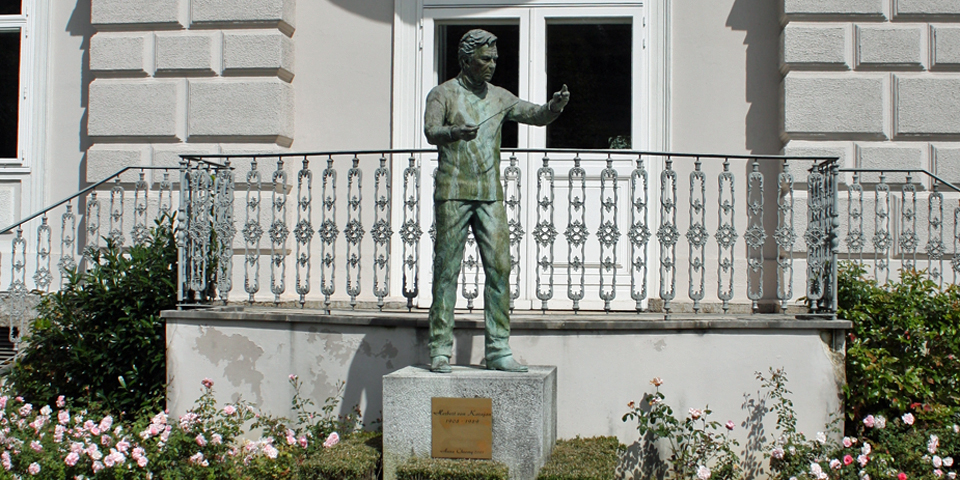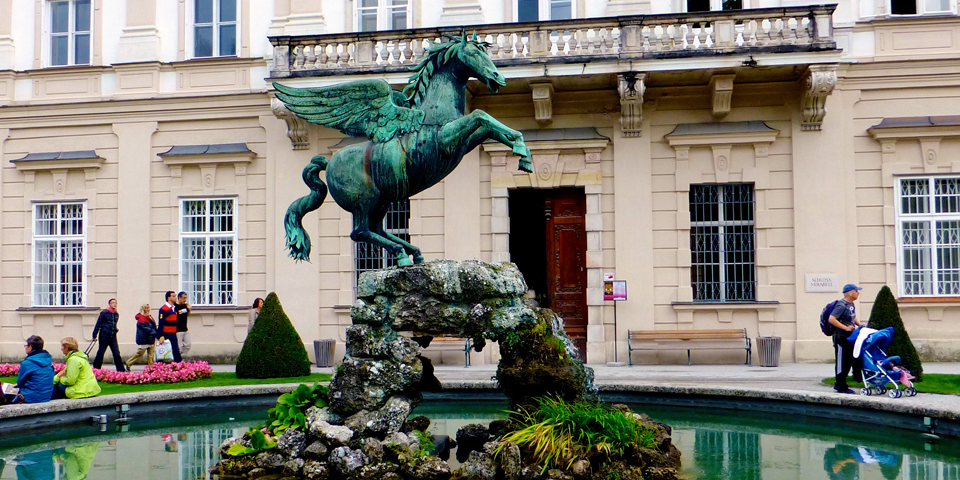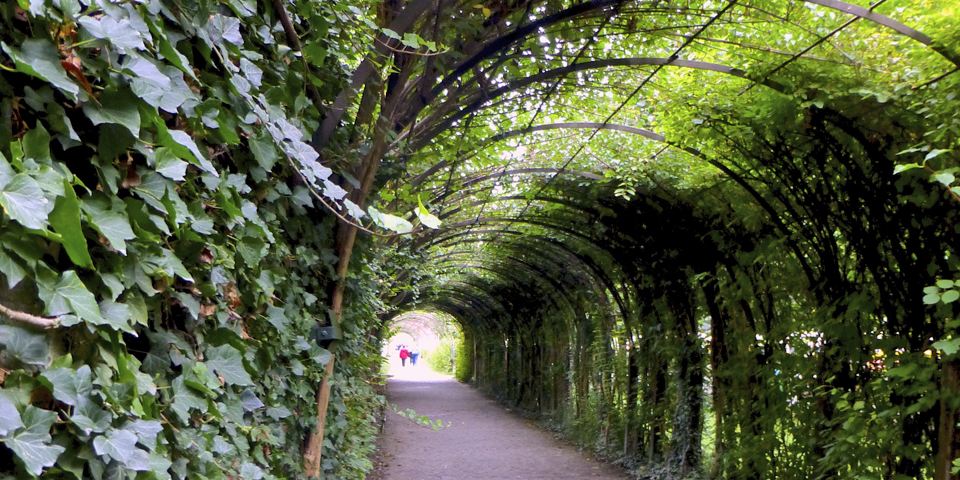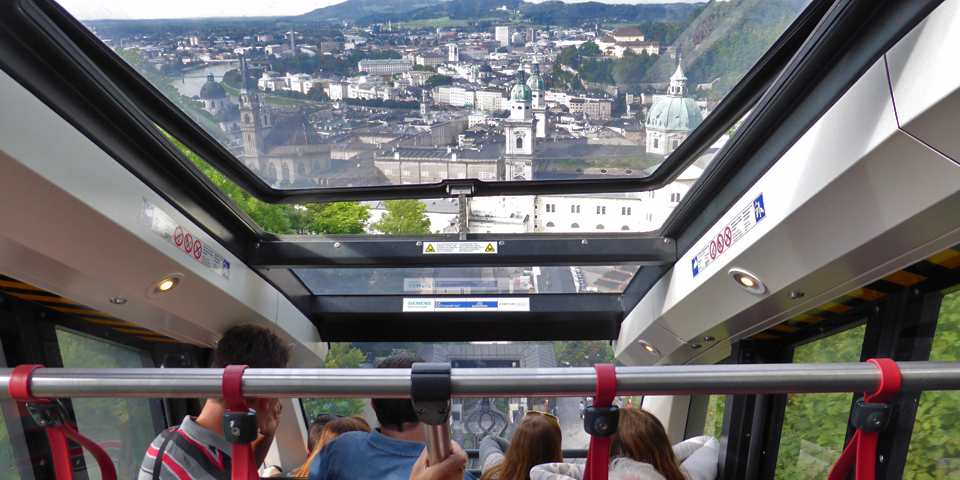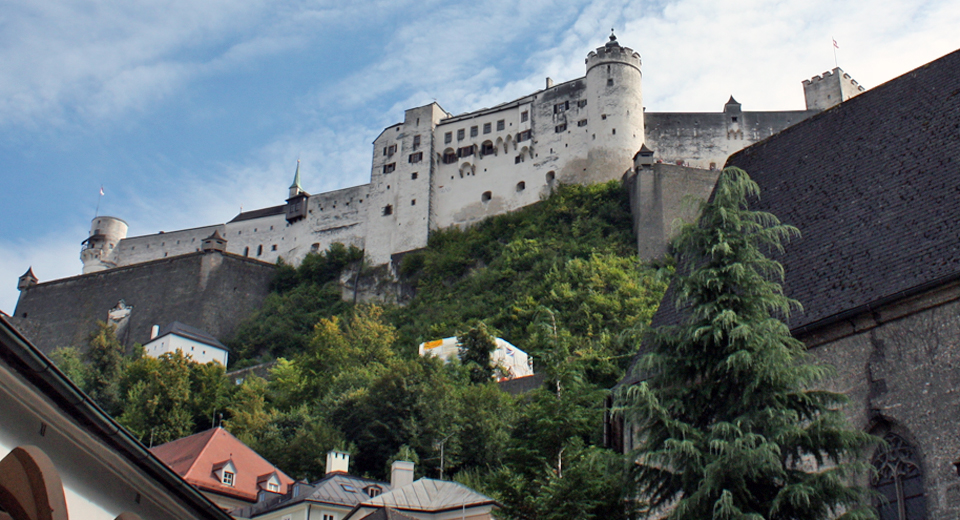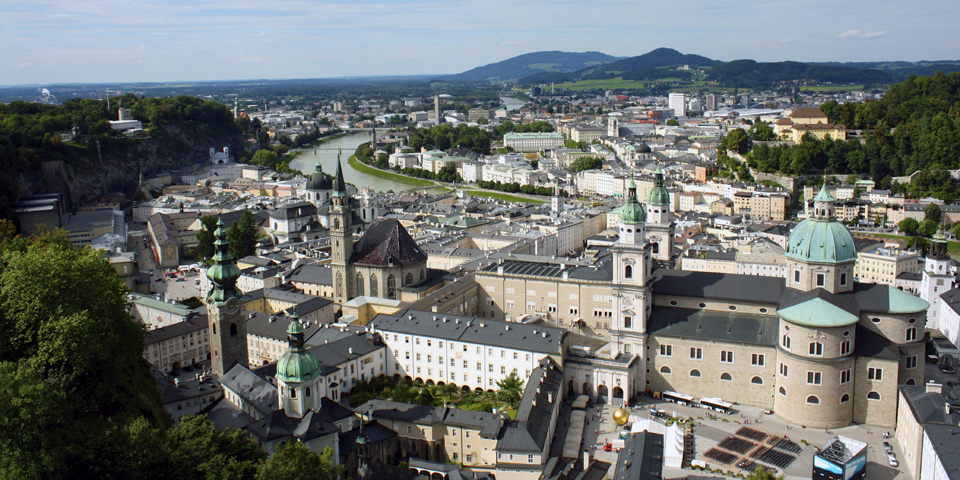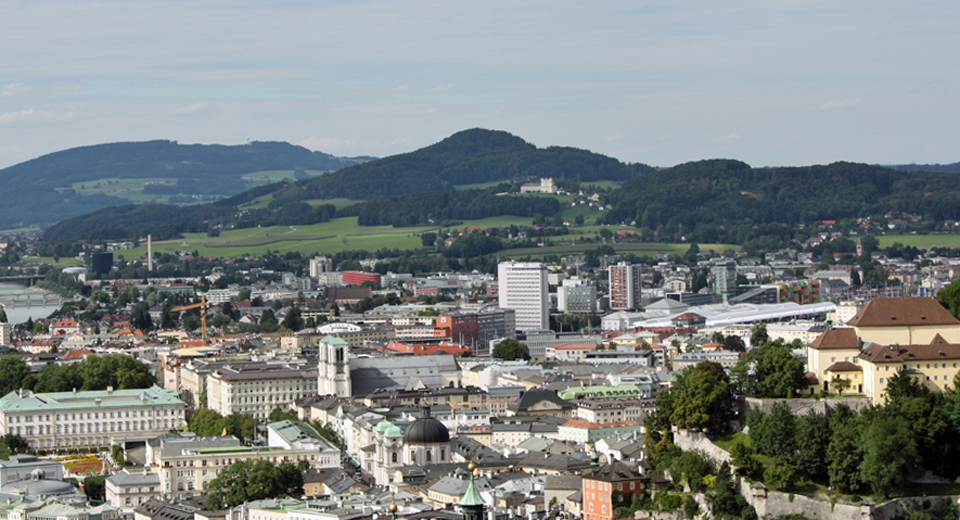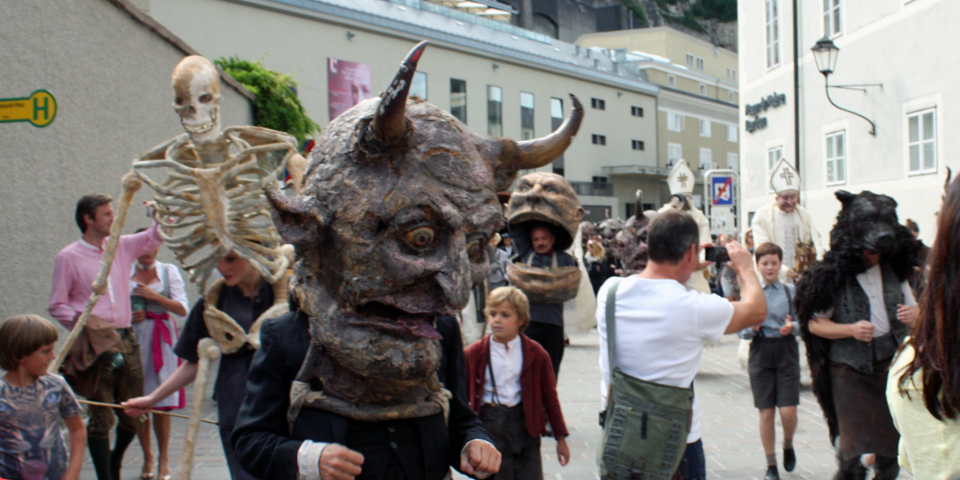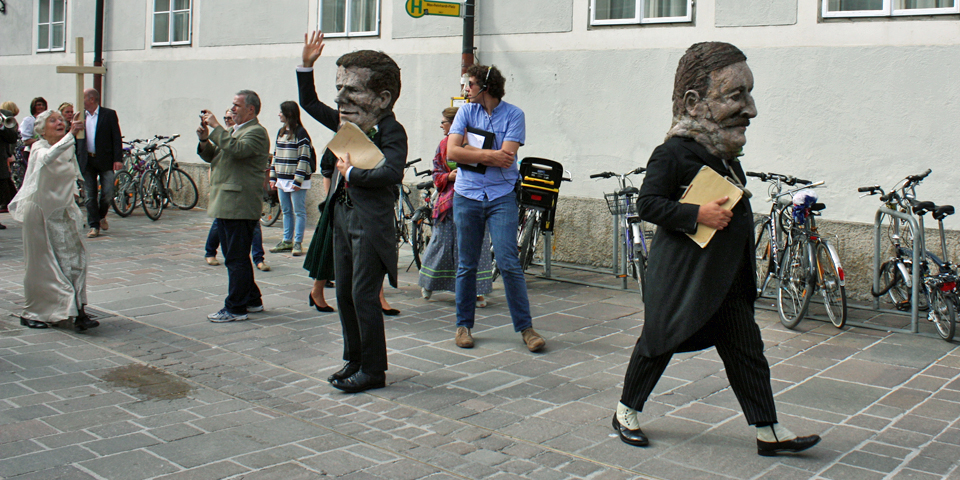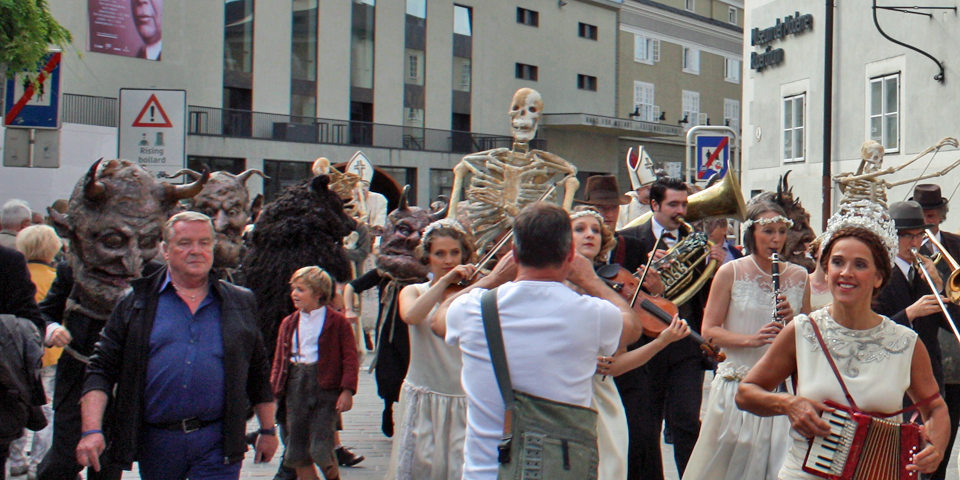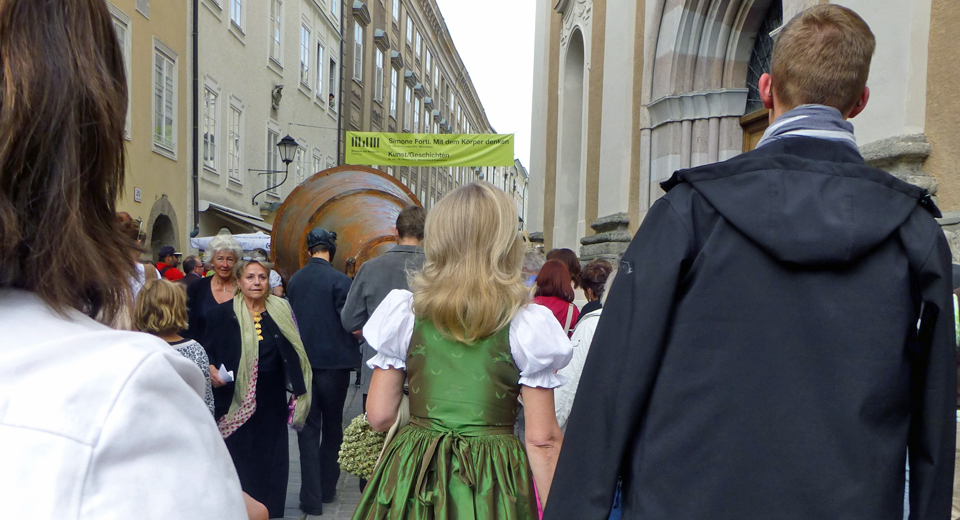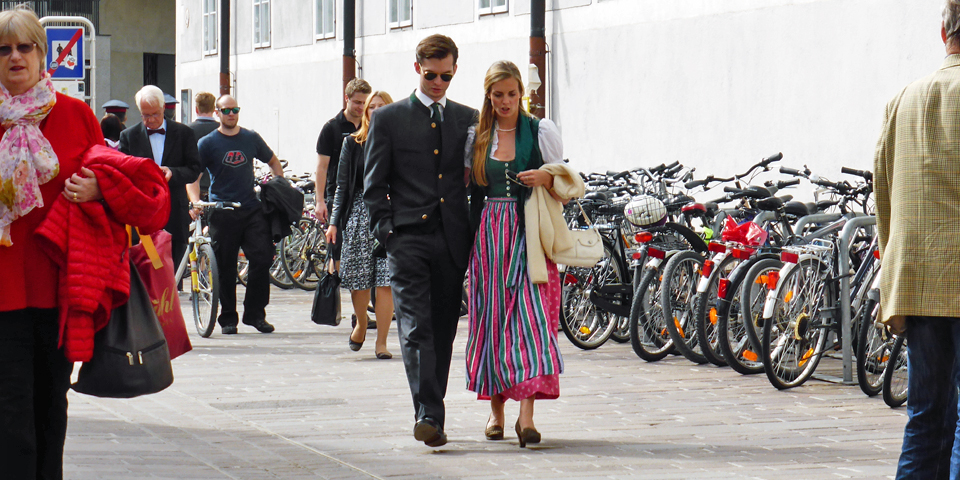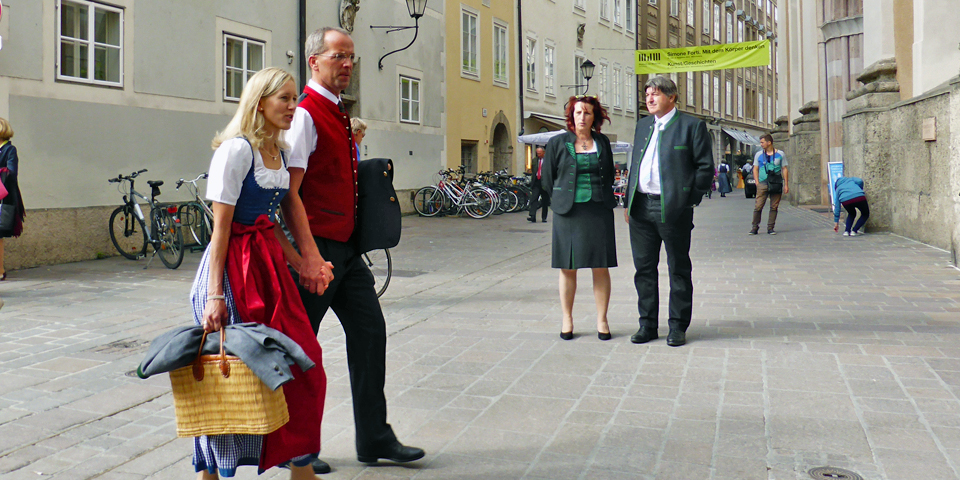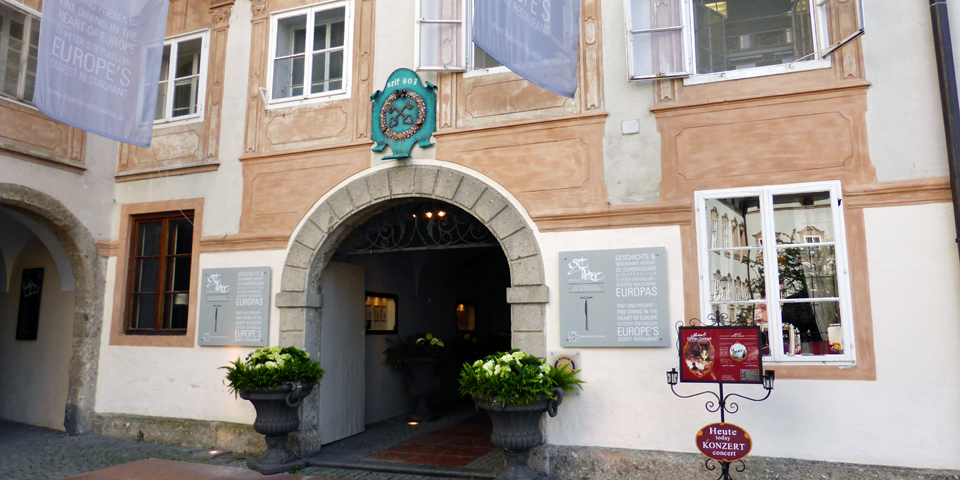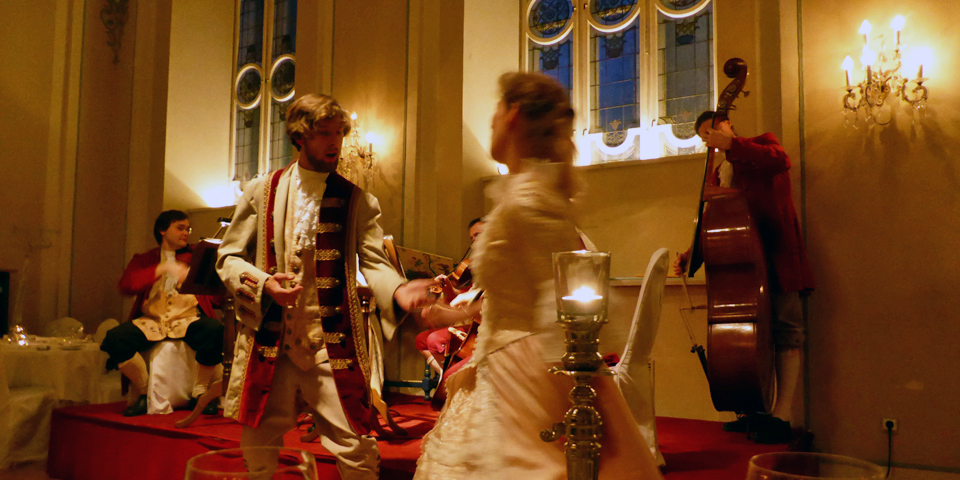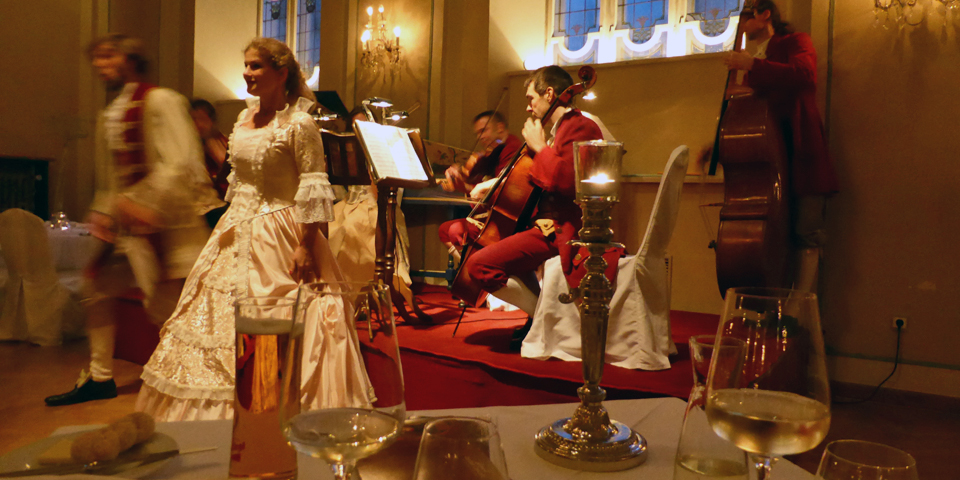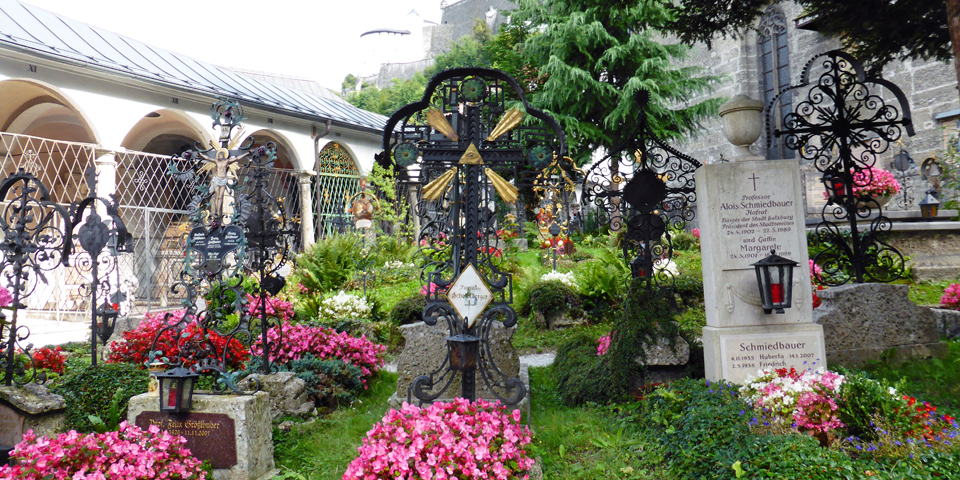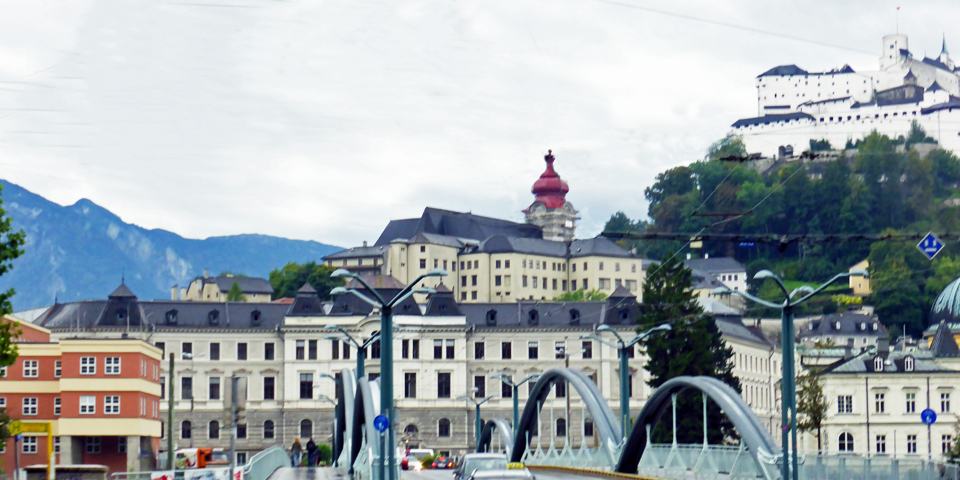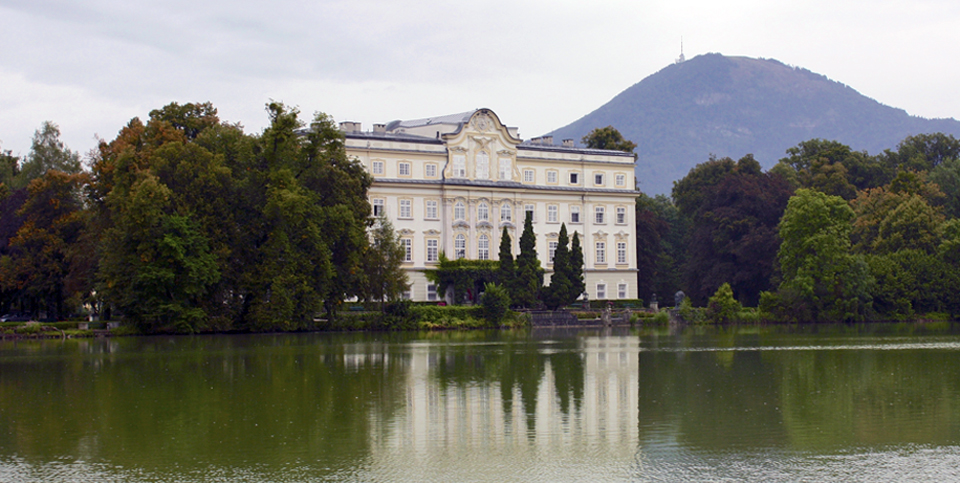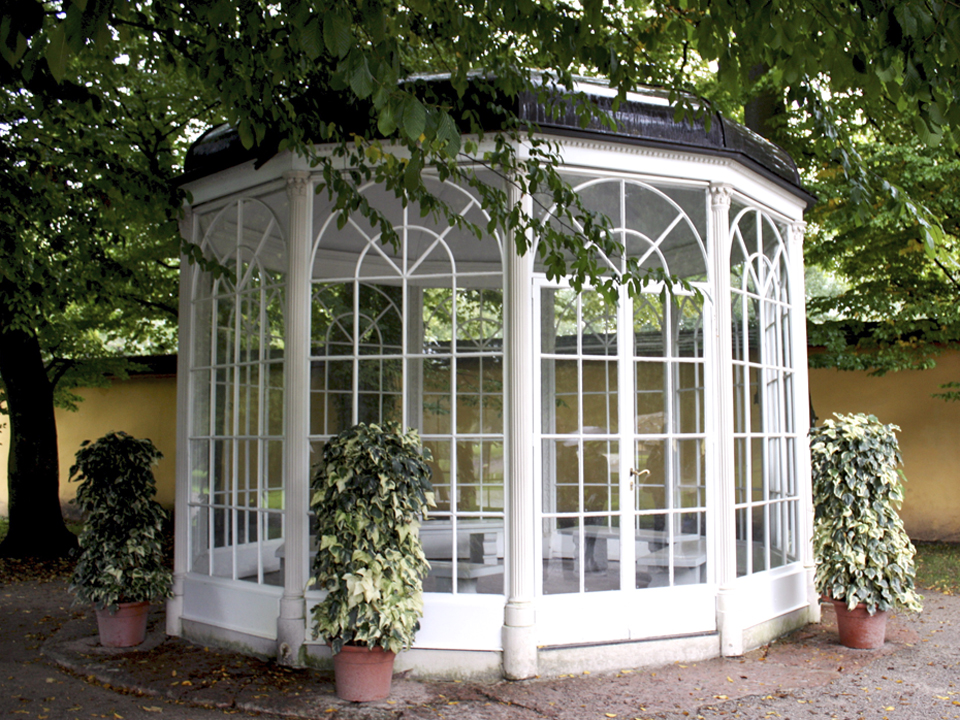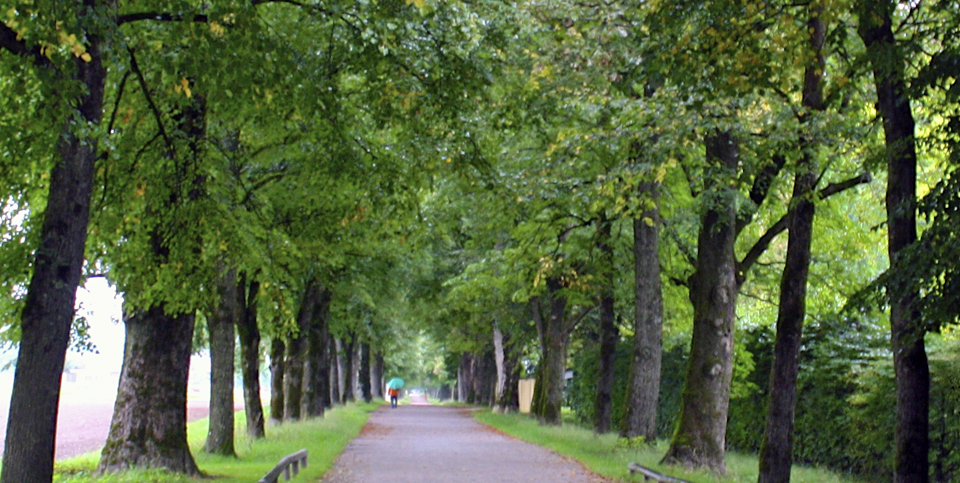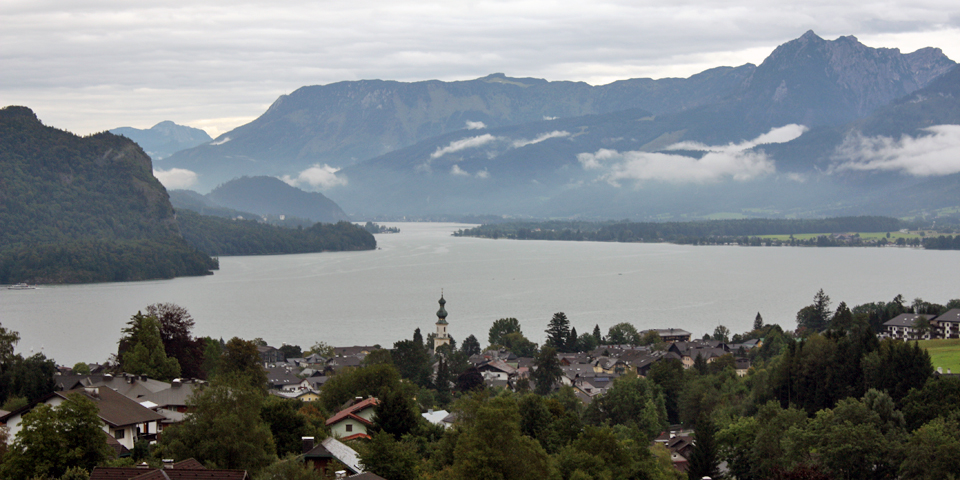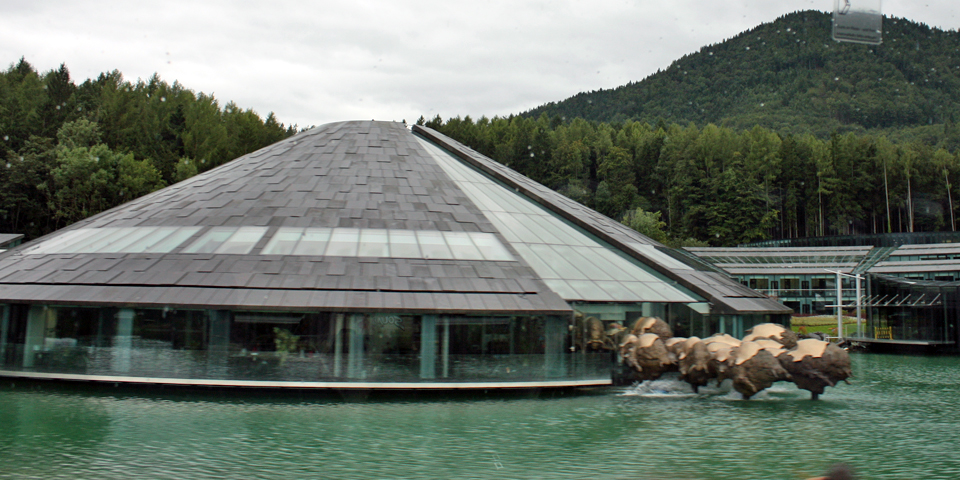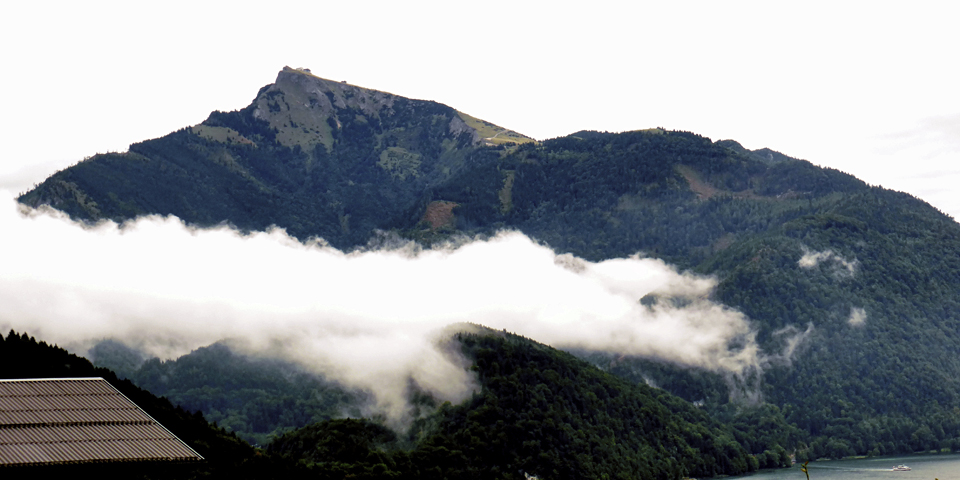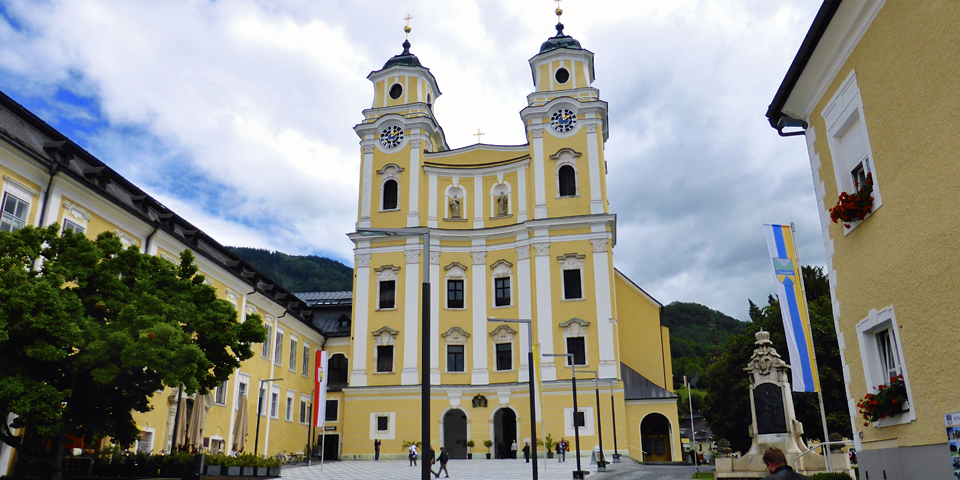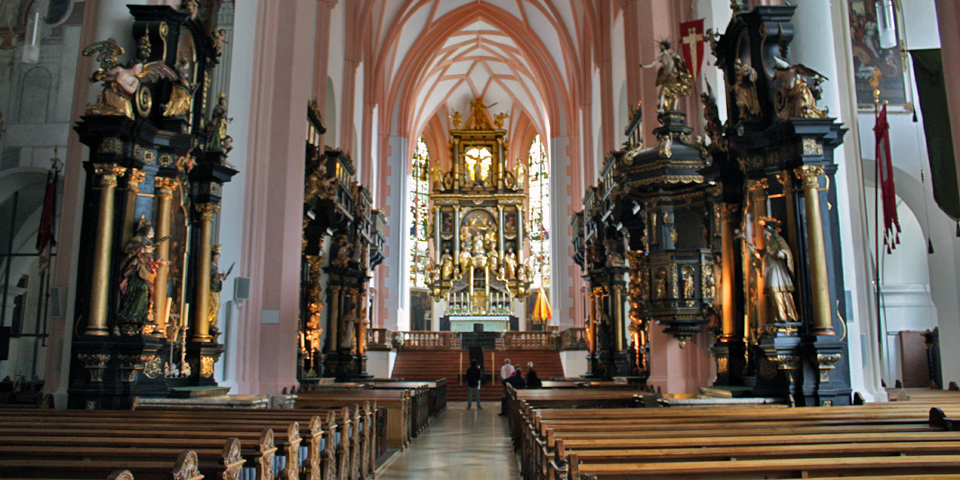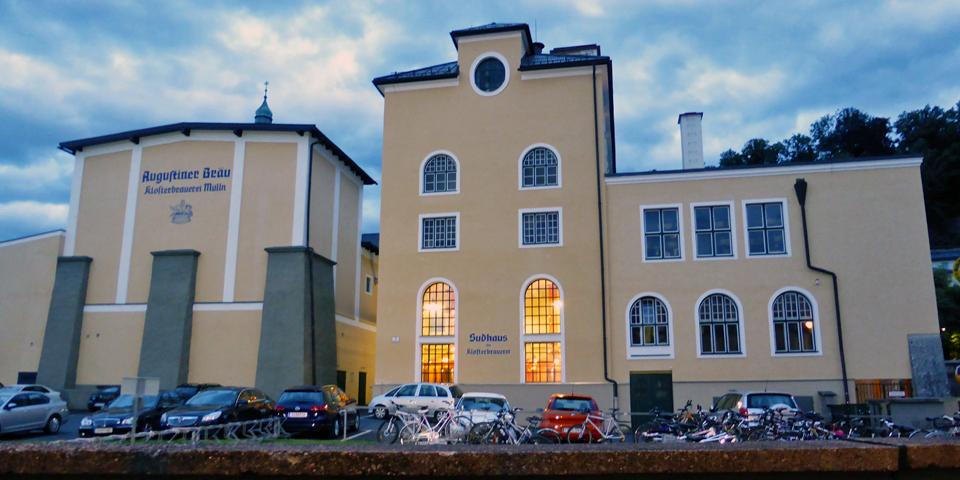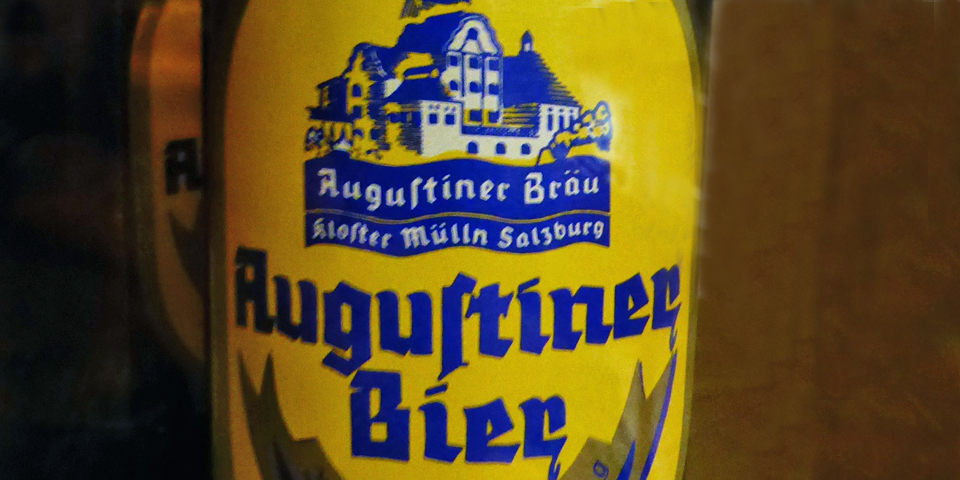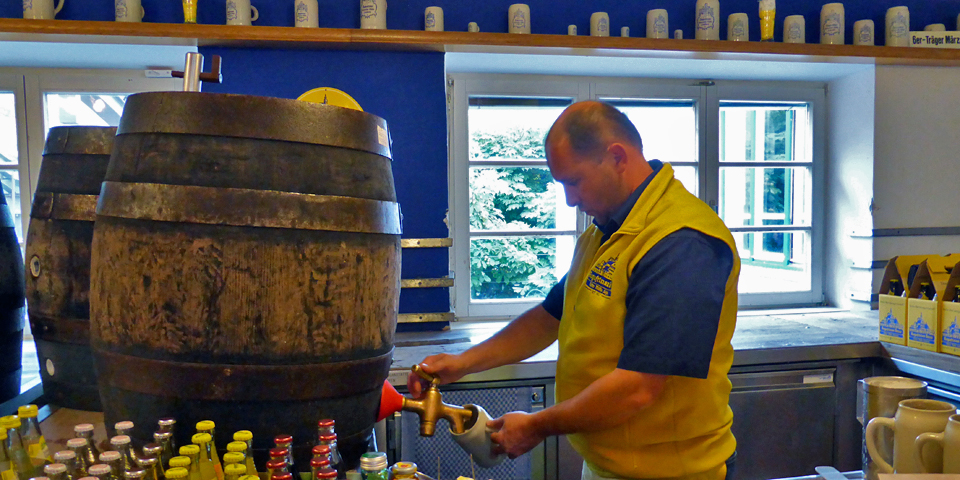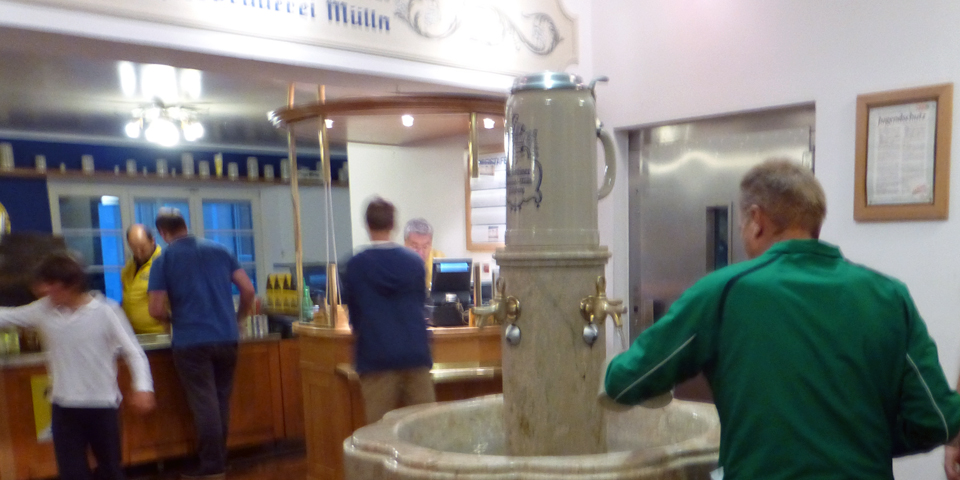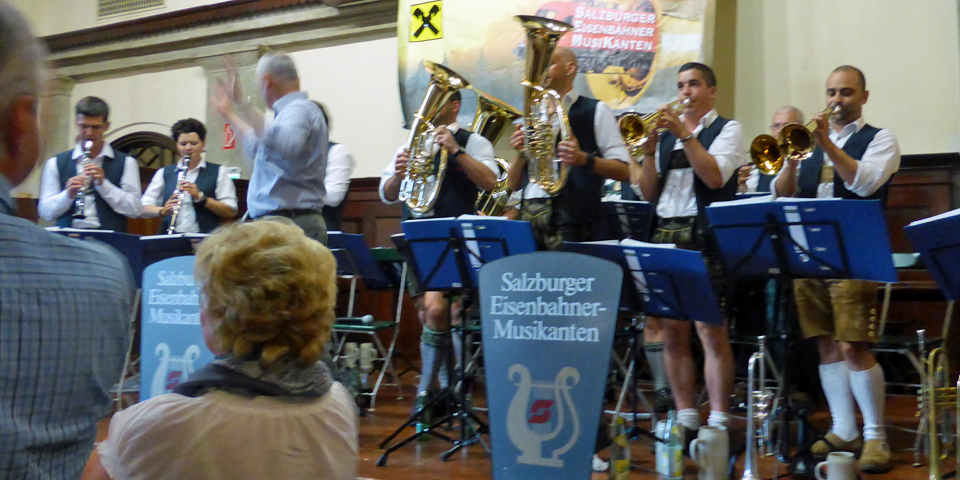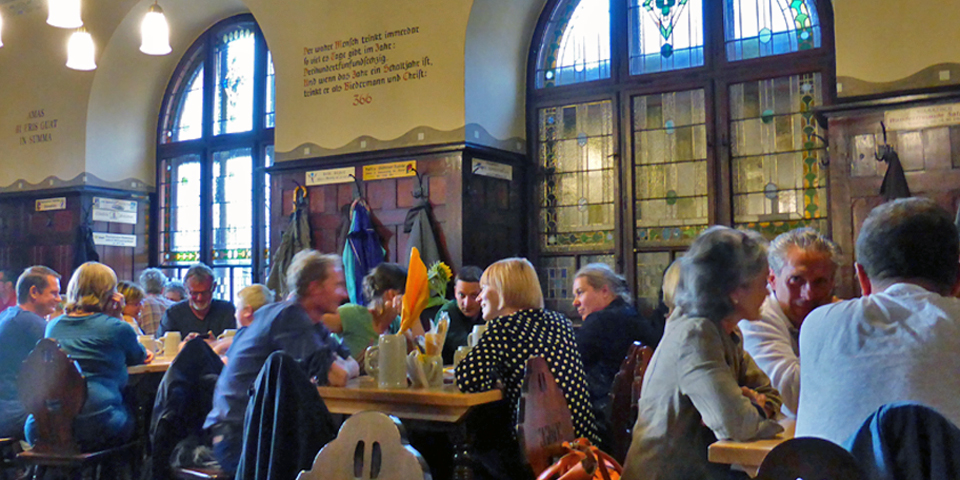Salzburg : the sounds of music
It was 1965 when an announcement about a field trip to see a movie came over the school’s public address system. Another dull documentary, we all presumed, but, after all, it meant half a day out of school!
As it turned out, the movie, “The Sound of Music,” a Hollywood version of the real story, became one of the most successful musicals ever. Rodgers & Hammerstein songs like “Edelweiss,” “My Favorite Things,” “Sixteen Going on Seventeen,” “Do-Re-Mi,” and the title song topped the charts. But it was the spectacular big screen scenery in and around Salzburg, Austria, that left me dreaming of being there myself.
Forty-nine years later, Roger and I decided to stop in Salzburg after our Viking River Cruise along the Danube. We toured the historic part of the city, Altstadt (Old Town), as soon as we arrived and planned a Gray Line Original Sound of Music Tour to sites farther afield for our second day.
Our Salzburg Cards were our keys to the city. They included free access to the city’s attractions, public transport, the Fortress funicular, Untersberg cableway, a Salzach ship tour, and discounts on cultural events and tours.
The internationally renowned Salzburg Festival was in full swing, and included nightly free concerts. This annual event began as a peaceful gathering of worldwide cultures after World War I. 2014 was the centennial of the start of the war, and the theme was bridging the gap between two world religions, Islam and Christianity, through their music.
The actual von Trapp family won a competition during the festival of 1936. The movie family won first place with “So Long, Farewell” and “Edelweiss” at the Festival Halls Complex, the main stages for the Salzburg Music Festival.
We were fortunate to get a reservation at the Hotel am Mirabellplatz. The movie’s children stayed there at a time when hotel guests left their shoes outside the guest room. One night the children created chaos by switching all the shoes on the third floor with those on the fourth. What is now the Hotel am Mirabellplatz was built in 1653 by Archbishop Paris Lodron as a secundogeniture (for a younger son at a time when the first son inherited the greater share of the estate) palace for his family to reside in. The structure has been used as an inn, guest house, or hotel since 1816.
Salzburg is a city steeped in history and culture, not its Hollywood connection. Aside from the colorful Sound of Music Tour coaches tucked behind Mirabell Gardens, we saw no signs indicating the film sites.
This is a city of music. Even the tour boat dances, spinning as a waltz is played.
Salzburg, or “salt castle,” gets its name and medieval prosperity from the gold and “white gold” mined here for over 3,000 years. A wooden barrel of salt was once worth as much as a house.
The figure atop Stephan Balkenhol’s “Sphaera” (2007) on the Kapitelplatz, Salzburg, Austria,is part of a ten year project to bring contemporary art to the city .
Prince-archbishops, elevated to this title by the Pope in 798, held absolute ecclesiastic and earthly rule until 1803. Their opulent palaces, like the Salzburg Residenz, were inspired by the grandeur of the Papal States of Rome and grew grander over the centuries. With income from trading, taxes and tithes, prince-archbishops commissioned the finest of everything, including art, architecture, and music, creating an extraordinary city.
DomQuartier, a cluster of four museums, opened May 17, 2014. A visit includes the lavish State Rooms, the opulent North Oratory of the Salzburg Cathedral, and art treasures and curiosities of the Cathedral and St. Peter’s, the oldest monastery on the German-speaking world. It has magnificent views of the city and mountains and is a must-see for any visitor.
Residenzplatz and its elegant baroque fountain with snorting horses were built on the site of an old Roman forum. In “The Sound of Music,” Maria sang “I Have Confidence” while passing through this central square to get a bus to the Von Trapp villa. Later, a Nazi flag was draped here.
This is also a place to begin a “fiaker”, or horse-drawn carriage ride for a ride through the Alstadt and to hear some some local folklore.In the Advent season, a Christmas market id held in Residenzplatz.
Salzburg’s Altstadt (Old Town) oozes so much charm it feels like a movie set. Little shops line lanes like Getreidegasse, one of the oldest streets inside the Salzburg City Gate. #9 is Wolfgang Amadeus Mozart’s birthplace. He was baptized in the Cathedral.
Later, Mozart’s family moved to a more impressive house that is now a top tourist attraction. It is on Makartplatz, named for a Salzburg painter, .
Physicist Christian Doppler, best known for the Doppler Effect, was born next door. The Doppler Effect explains the difference in sound perceived by an observer when there is movement between the observer and the source, as with the siren of an emergency vehicle that approaches and then passes by.
During filming of “The Sound of Music,” Christopher Plummer stayed across the street in the Hotel Bristol. Julie Andrews and her young daughter were in the nearby Hotel Sacher Salzburg, which is known for its original Sacher Torte.
The chocolate shop Fürst has made award-winning hand-crafted Mozartkugels since 1890. There are many imitations, but an authentic Mozartkugels have a green pistachio flavored marzipan center covered with nougat and dark chocolate. Its Cafe-Konditorei is a popular place to relax.
A small seasonal museum is dedicated to Michael Haydn, composer and younger brother of the better-known Joseph Haydn. Mozart went to Vienna to further his own career but Haydn served in the court of the archbishop and is buried at St. Peter’s.
Conductor and child prodigy Herbert von Karajan, renowned for classical music and his preeminent role in enhancing the cultural prominence of his city, was born here 1908.
A square in the festival district is named for him and his life-size bronze statue is near the Makart Bridge.
Prince-Archbishop Wolf Dietrich von Raitenau had Mirabell Palace built in 1606 for his mistress, Salome Alt, with whom he had fifteen children. It now serves as offices for the mayor and municipal council. The Marble Hall is said to be the most beautiful wedding reception room in the world. Maria and the children sang “Do-Re-Mi” at the garden’s Pegasus Fountain and in its tunnel of hedges. The Marionette Theater (1913 ), a local favorite, is at the end of the garden.
We took a cable car up to Hohensalzburg Fortress, often seen in the background in the movie.
It dates to 1077 and is one of the largest medieval fortresses in Europe.
The view from the ramparts is the best in town. Napoleon used the fortress as a barracks and dungeon.
Back in the city, we stumbled upon a festival parade of skeletons, oversized clerics, and characters with big heads, and an enormous horn.
We enjoyed seeing how many concertgoers were dressed in traditional ‘tract’ — women in dirndls, men in woolen jackets and a few men in lederhosen. Not a bad finale to our day, but there was more to come.
That night we returned to St. Peter’s for a Mozart Dinner Concert at the Stiftskeller St. Peter, inside St. Peter’s Archabbey.
It dates to 803 and is Austria’s oldest restaurant. We feasted on a three course dinner of period recipes while watching a performance by the Amadeus Consort Ensemble in historic costumes.
The movie’s cemetery scenes were based on the at the arch abbey but filmed at 20th Century Fox Studios.
Nonnburg Abbey, site of the von Trapp wedding, was too small for film crews so a church outside the city was used. However, the abbey was where the song “Maria” was sung, the children came to the gate, and the escape scene with the car was filmed. Other abbey scenes were done in Hollywood.
The next morning we took Gray Line’s Original Sound of Music Tour to see the movie’s sites beyond the Old Town. Although we would have preferred sunshine, enjoying the music and lush green mountain scenery was a great way to spend a rainy day.
Our tour guide played a Sound of Music CD and everyone seemed to know all the words to every song. Between songs he talked about the myths and facts surrounding the movie. Maria von Trapp’s book,The Story of The Trapp Family, depicts a far less romantic, glamorous, or dramatic life than the movie.
We stopped across the lake from 18th century rococo Leopoldskron Palace, built for a prince-archbishop and used in several “Sound of Music” scenes. Maria and the children fell from the boat here. The water was frigid and the children had to be bribed with hot chocolate and cake to do a retake. The actress who played Gretel could not swim and has not liked going in the water since.
The palace is now affiliated with Harvard University. Its glass gazebo, shown in the movie, was moved to the grounds of the popular Hellbrunn Palace, built with trick fountains in 1615 for an archbishop’s amusement.
Scenes and songs set inside the gazebo — Liesl’s “Sixteen Going on Seventeen” and Maria’s “Something Good” were filmed in a larger gazebo in Hollywood, Liesl was actually twenty-one, and the oldest child in the real von Trapp’s family was a boy, Rupert. We were also told that Liesl’s shoes got wet in the rain during that scene. She slid on the floor, broke a glass pane, cut and sprained her ankle, but finished the scene to a standing ovation from the cast.
The children were growing and changing throughout the filming. Liesl wore flat shoes in the beginning and later stood on a box to be taller than the older son, who grew 6 inches in 12 weeks. Some of the children lost teeth. Others gained weight from all the chocolate and cake. Christopher Plummer, who did not like working with children, refused to carry Gretl for their mountain escape and carried a lighter dummy on his back.
Trees to von Trapp home_ “The Sound of Music” children climbed wearing clothing made from draperies, Salzburg, Austria
Our guide pointed out the trees lining the road to the front of the von Trapp’s actual house, which is now a hotel. The “Sound of Music” children climbed these trees dressed in clothing made from the old draperies.
We passed the popular vacation area of Lake Fuschl, which was formed of glaciers that melted after the last Ice Age. The water is clear and so clean you can drink it. We passed the headquarters of Red Bull Energy Drink, which is produced in the Austrian and Swiss Alps.
This region area of lakes and mountains was once the hunting ground of nobility, royalty, and the prince-archbishop and has attracted people like Presidents Kennedy, Nixon, and Reagan and celebrities Arnold Schwarzenegger, and Brad Pitt.
Our tour continued to Lake Wolfgang for a view of Schafburg, the mountain where Julie Andrews sang “The Sound of Music” in the opening scene. The downdraft from the film crew’s helicopter made this challenging scene for her.
Then we were off to Mondsee region to see St. Michael’s Basilica, site of the movie wedding.
To create the illusion of a longer aisle, a platform was built high in the back of the church, just below the organ. The film crew shot the scene while lying on their stomachs.
There was free time to stop in one of the cafés and bakeries for some strudel or to shop for traditional Austrian clothing or other souvenirs. Then it was time to return to Salzburg.
Salzburg was once part of Bavaria and shares its culture, which includes breweries. We took a taxi up a steep hill to the Monastery Mülln, one of Salzburg’s ten breweries.
Its Augustiner beer has been brewed according to a secret recipe since 1621.
This lively beer hall and garden has an arcade of market stalls selling schnitzels, wursts, pretzels, and is a popular meeting place.
Our stein was filled with beer drawn right from a wooden barrel as workers rolled out more.
We rinsed our steins at a fountain before a refill.
We were there for Augustinus Fest on a night of the when a lederhosen-clad brass band performed traditional favorites.
The communal tables were a place to enjoy spirited conversation with locals eager to speak with visiting Americans.
Salzburg will be celebrating the 50th anniversary of the Sound of Music this year. For more information this baroque gem and its special events, go to www.salzburg.info or call Austrian tourism in New York at 212 944-6880.

